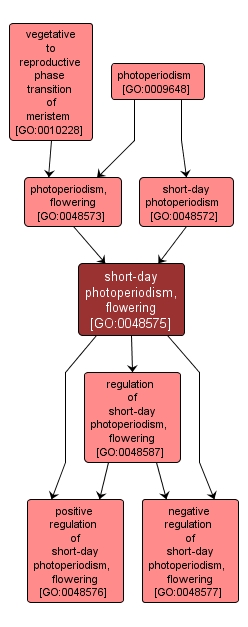GO TERM SUMMARY
|
| Name: |
short-day photoperiodism, flowering |
| Acc: |
GO:0048575 |
| Aspect: |
Biological Process |
| Desc: |
A change from vegetative to reproductive phase as a result of detection of, or exposure to, a period of light that falls short of the critical day length. The critical day length varies between species. Although the term is short-day is used, most species actually respond to the duration of the night, so that the response will occur when a period of darkness exceeds the number of hours defined by 24 minus the critical day length. |
Synonyms:
- short-day photoperiodic control of flowering time
- short-day photoperiodic control of flowering
- response to short-day, flowering
- response to long-night, flowering
- long-night photoperiodism, flowering
- short-day photoperiodic control of inflorescence development
|
|

|
INTERACTIVE GO GRAPH
|














